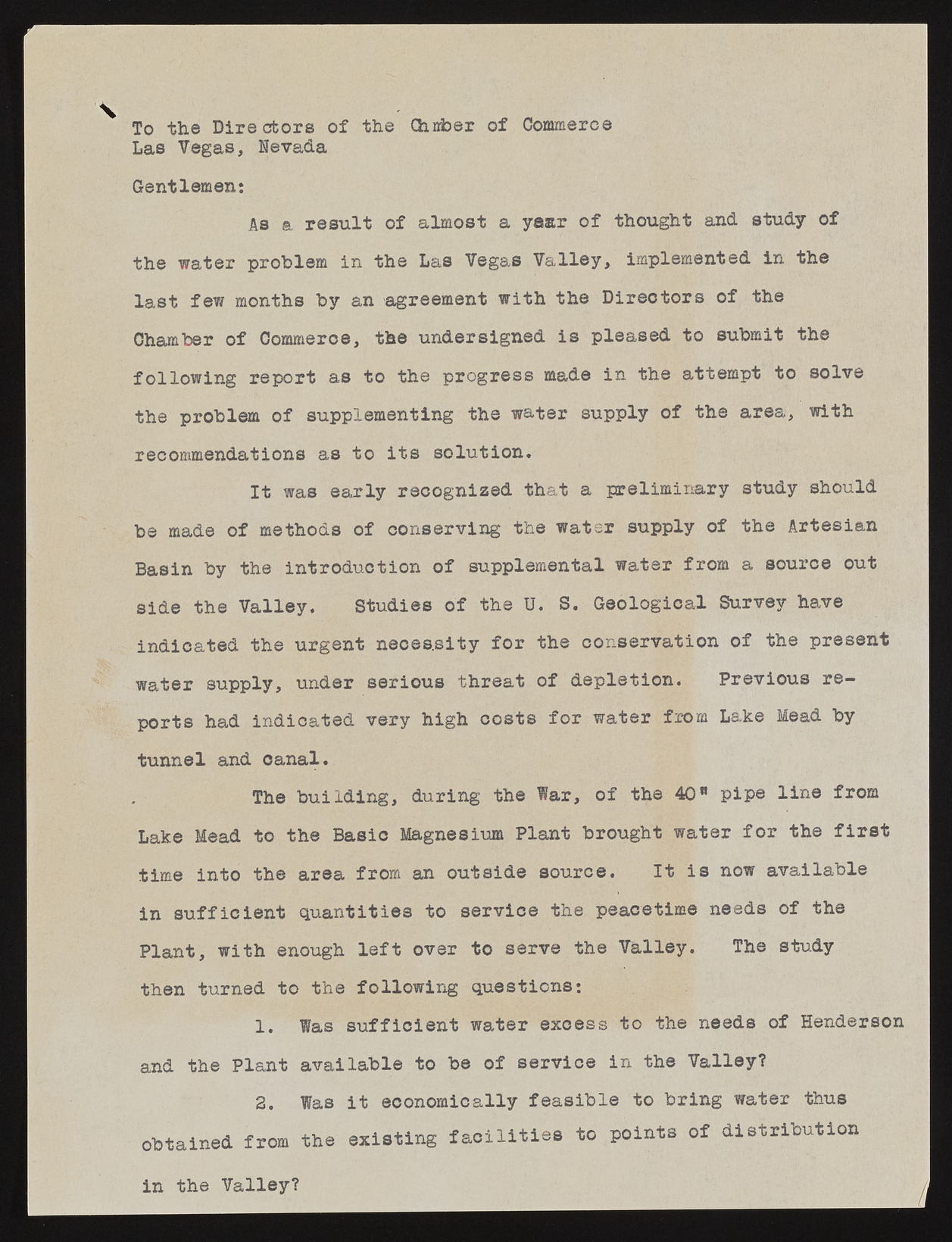Copyright & Fair-use Agreement
UNLV Special Collections provides copies of materials to facilitate private study, scholarship, or research. Material not in the public domain may be used according to fair use of copyrighted materials as defined by copyright law. Please cite us.
Please note that UNLV may not own the copyright to these materials and cannot provide permission to publish or distribute materials when UNLV is not the copyright holder. The user is solely responsible for determining the copyright status of materials and obtaining permission to use material from the copyright holder and for determining whether any permissions relating to any other rights are necessary for the intended use, and for obtaining all required permissions beyond that allowed by fair use.
Read more about our reproduction and use policy.
I agree.Information
Digital ID
Permalink
Details
More Info
Rights
Digital Provenance
Publisher
Transcription
To the Directors of the Chmber of Commerce Las Vegas, Hevada Gentlemen: As a result of almost a year of thought and study of the water problem in the Las Vegas Valley, implemented in the last few months by an agreement with the Directors of the Chamber of Commeroe, the undersigned is pleased to submit the following report as to the progress made in the attempt to solve the problem of supplementing the water supply of the area, with recommendations as to its solution. It was early recognized that a preliminary study should be made of methods of conserving the water supply of the Artesian Basin by the introduction of supplemental water from a source out side the Valley. Studies of the U. S. Geological Survey have indicated the urgent neces.sity for the conservation of the present water supply, under serious threat of depletion. Previous reports had indicated very high costs for water from Lake Mead by tunnel and canal. The building, during the War, of the 40" pipe line from Lake Mead to the Basic Magnesium Plant brought water for the first time into the area from an outside source. It is now available in sufficient quantities to service the peacetime needs of the Plant, with enough left over to serve the Valley. The study then turned to the following questions: 1. Was sufficient water excess to the needs of Henderson and the Plant available to be of service in the Valley? 2. las it economically feasible to bring water thus obtained from the existing facilities to points of distribution in the Valley?

